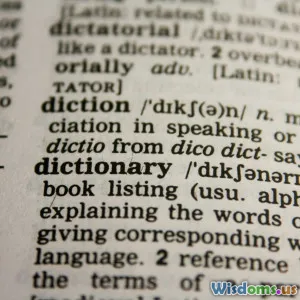
Do Language Rights Truly Protect Minority Speech Communities
10 min read Examining if language rights effectively safeguard minority speech communities and their cultural heritage worldwide. (0 Reviews)
Do Language Rights Truly Protect Minority Speech Communities?
Language is much more than a communication tool; it is the bedrock of cultural identity and community cohesion. Around the world, minority speech communities face the growing threat of extinction due to globalization, dominant languages, and political marginalization. Legal protections—often framed as language rights—have been implemented to safeguard these vulnerable linguistic groups. But do they truly protect minority speech communities, or are they merely symbolic gestures?
Introduction
Imagine a world where your native tongue is not just unfamiliar but actively suppressed or marginalized in public life, education, or media. For many minority speech communities, this reality is not hypothetical but ongoing. Language rights claim to mitigate this challenge, ensuring the preservation and promotion of linguistic diversity. Yet, questions linger about their actual efficacy in a socio-political context constantly tilting toward dominant languages. This article explores the nature and impact of language rights, assessing whether they deliver tangible protection or fall short in safeguarding minority speech communities.
Understanding Language Rights and Their Purpose
Language rights refer to the legal guarantees that allow individuals and communities to use their native languages in personal, social, educational, and governmental settings. These rights are often embedded within constitutional frameworks, international treaties, or national laws.
Historical Context
Historically, dominant languages have frequently overshadowed minority tongues, leading to language shift or attrition. The 20th century marked a turning point as international organizations, such as UNESCO, began recognizing linguistic diversity as a global patrimony in need of protection. Their 1996 "Universal Declaration on Cultural Diversity" and the 2001 "Universal Declaration on Linguistic Rights" laid foundational principles emphasizing the preservation of all languages.
Legal Frameworks
Various countries have incorporated language rights in their legal apparatus. For instance, Canada’s Official Languages Act ensures French and English have equal status federally, boosting the vitality of French-speaking minorities. Similarly, New Zealand’s Maori Language Act (1987) grants official status to Te Reo Māori, bolstering efforts to revitalize this indigenous language.
Internationally, the European Charter for Regional or Minority Languages (1992) promotes the protection and encouragement of minority languages across Europe. It obligates signatory states to respect linguistic rights across education, judiciary, cultural activities, and media.
The Promise of Language Rights
Empowerment Through Recognition
One of the most immediate benefits of language rights is symbolic empowerment. Official recognition confers prestige and legitimacy to minority languages, which can improve community self-esteem and cultural pride.
For example, in Wales, the passage of the Welsh Language Act 1993 allowed Welsh speakers to use their language in legal proceedings and public administration, fostering a linguistic resurgence paired with strong cultural nationalism.
Educational Access
Language rights often guarantee the right to education in the mother tongue, an essential factor for cognitive development, cultural preservation, and social inclusion. Countries like Finland provide education in minority languages such as Sami, helping sustain these tongues across generations.
Media and Public Sphere Inclusion
Legal provisions also frequently extend to media, ensuring minority language broadcasting and publications to nurture daily language use. Take the Basque Country in Spain: the availability of Basque language newspapers and television channels promotes active linguistic engagement.
The Real-World Challenges and Limitations
Despite these positive frameworks, the real-life protection of minority speech communities often encounters significant hurdles.
Incomplete or Symbolic Implementation
Many language rights remain constrained by political will and resource allocation. Legal recognition does not always translate into effective implementation. India, for example, recognizes several minority languages but often fails to provide sufficient educational materials or official services in all of them, leading to practical invisibility.
Dominance of Majority Languages
Globalization and economic imperatives incentivize learning dominant languages like English, Spanish, or Mandarin, reducing minority language use even when rights exist. The younger generation may opt for languages offering better employment prospects, weakening mother tongues from within.
Social Stigma and Discrimination
Outside legal contexts, attitudes toward minority languages can be dismissive or hostile. When communities perceive their languages as inferior or irrelevant, they may volunteer to abandon them, accelerated by peers or societal pressures.
In the United States, Native American languages hold official protections but are often endangered because of years of historical repression and ongoing social discrimination.
Case Studies: Successes and Struggles
The Revival of Hebrew
While not a minority language today, Hebrew’s revival exemplifies how dedicated institutional support, from education to media, can resurrect and sustain a language—albeit under unique cultural and political conditions.
The Declining Use of Aboriginal Australian Languages
Despite Australia's recognition of Aboriginal languages, over 90% of these languages are endangered, highlighting that legal rights alone are insufficient without community-driven initiatives and adequate funding.
Quebec's Language Protections
Quebec’s Bill 101 (Charter of the French Language) enforces the use of French in education, commerce, and government, strongly supporting the Francophone minority within Canada. This law showcases how robust legislation can maintain linguistic vitality but also raises debates on individual rights and multinational coexistence.
Moving Beyond Legal Rights: Holistic Approaches to Protection
Community Ownership
Legal protections work best when coupled with grassroots efforts. Language nests, immersion schools, and cultural festivals have revitalized languages, as seen with Maori in New Zealand and Hawaiian in the United States.
Economic Incentives
Promoting economic opportunities linked to language skills enhances value and encourages use. Tourism, local media, and digital content creation in minority languages can support practical vitality.
Inclusive Policy Making
Successful protection integrates voices from minority communities into policymaking. Ensuring that representatives of these speech groups participate in legislation and feedback creates more responsive frameworks.
Leveraging Technology
Innovations such as mobile apps, online courses, and social media platforms open new pathways to learn and use minority languages informally and formally, circumventing traditional roadblocks.
Conclusion
Language rights are critical instruments in the struggle to protect minority speech communities, offering legal backing that legitimizes and can bolster linguistic diversity. However, the effectiveness of these rights depends heavily on genuine implementation, adequate resource allocation, and societal attitudes.
Without complementary sociocultural initiatives and economic strategies, language rights risk becoming mere symbolic declarations rather than practical protections. To truly safeguard minority languages, governments, communities, and civil society must collaborate holistically, recognizing that language preservation is tied profoundly to cultural dignity and human rights.
A world that cherishes its linguistic diversity not only preserves endangered tongues but also enriches the human experience, fostering empathy, creativity, and identity. Language rights are a crucial step but must be part of a broader commitment to valuing all voices.
References
- UNESCO, Universal Declaration on Linguistic Rights, 2001.
- European Charter for Regional or Minority Languages, 1992.
- Fishman, J. A. (1991). "Reversing Language Shift: Theoretical and Empirical Foundations of Assistance to Threatened Languages."
- Crystal, D. (2000). "Language Death." Cambridge University Press.
- King, J. (2001). "Language Revitalization Processes and Prospects: Quichua in the Ecuadorian Andes." Multilingual Matters.
Rate the Post
User Reviews
Other posts in Cultural Studies
Popular Posts


















